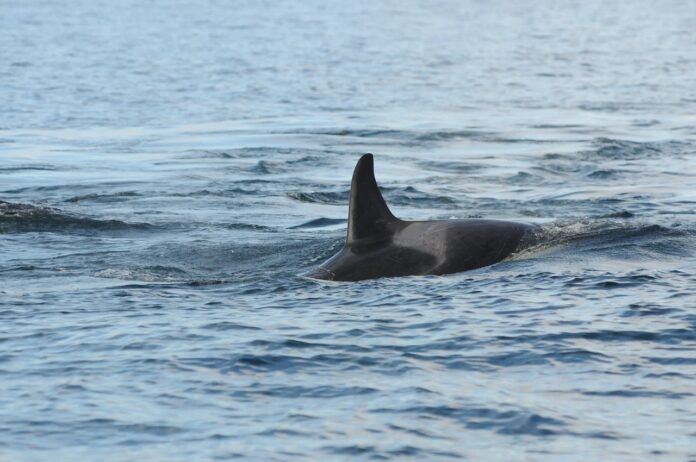Researchers looking at southern resident killer whales, who are in danger of extinction, have seen a marked rise in the prevalence of skin conditions in this species.
According to a study in PLOS ONE, the frequency of highly associated grey patches and grey targets on the whales’ skin increased steadily between 2004 and 2016.
According to the scientists, The most likely cause is an infectious agent, and an increase in lesions may indicate that the whales’ immune systems are becoming less effective at fending off illness.
The health of a southern resident killer whale population already suffering several difficulties may be further threatened by this.
The research is led by wildlife veterinarian Joseph K. Gaydos, science director for the SeaDoc Society, a School of Veterinary Medicine program at the University of California, Davis. The researchers analyzed a vast collection of digital photographs over a decade obtained by the Center for Whale Research for identification purposes.
The photographs, obtained by the Center for Whale Research for identification purposes, included nearly 20,000 individual whale sightings in the Salish Sea, providing invaluable data for remotely assessing the health of these endangered animals.
The Centre for Whale Research has photographically identified southern resident killer whales in the Salish Sea since 1976, taking distinct pictures of each individual. When analyzing these photos, biologists saw temporary and occasionally chronic aberrant skin alterations in the whales. However, for these purposes, these skin alterations had never been systematically identified or monitored over time.
Skin lesions on southern resident killer whales that appear as grey patches or targets may indicate a decline in the whales’ immune system. Six different skin disease syndromes were seen in the images. However, none of them were linked to death. Unexpectedly, the two most prevalent lesions showed a constant increase.
Analyzing southern resident killer whales’ overall health and potential impact on population recovery requires a thorough understanding of the occurrence and importance of skin changes in these animals.
This tiny, threatened population of fish-eating salmon specialists, known as J, K, and L pods, inhabits coastal and inland waters from southeastern Alaska to California.
Less than 75 people survive, making the population endangered. Although body composition scoring and causes of death have been the main topics of previous research, little is known about the role of health in the slow population rebound.
There needs to be more information on the role of health in the slow population rebound because previous research has mostly concentrated on the causes of mortality and body condition rating.
Photographic identification, mainly when capture-release health assessments are impractical, has been found to offer valuable insights into the animals’ general health.
Photographic identification offers a non-invasive method for researching skin illnesses and their epidemiology. However, it does not allow for determining specific causes. Even so, it provides essential information about the animal’s general health, especially when capture-release health checks are not practical.
Gaydos said, “Before we looked at the data, we had no idea that the prevalence of these skin lesions was increasing so dramatically; it’s worrisome. Now we need to try and isolate the potential infectious agent.”
This study highlights the need for ongoing monitoring and investigation to identify the root causes and potential health effects of these skin changes, ultimately assisting in the conservation and recovery of this endangered population. It also represents a significant advancement in understanding the epidemiology of skin changes in southern resident killer whales.
The majority of animals dislike going to the vet. Yet, when the SeaDoc Society visits a killer whale in the middle of the ocean, the orcas nearly jump into the boat. In this episode of Salish Sea Wild, SeaDoc and its conservation partners use cutting-edge technology to help conserve Southern Resident killer whales at risk of extinction.
Researchers from numerous organizations, including the Centre for Whale Research, British Columbia’s Animal Health Centre, NOAA’s Northwest Fisheries Science Centre, San Diego Zoo Wildlife Alliance, SeaWorld Parks and Entertainment, the Vancouver Aquarium, Wild Orca, and others, worked together on the project in addition to the SeaDoc Society.
Journal Reference:
- Judy St. Leger, Stephen Raverty, et al.Epidemiology of skin changes in endangered Southern Resident killer whales (Orcinus orca).PLOS ONE. DOI: 10.1371/journal.pone.0286551
